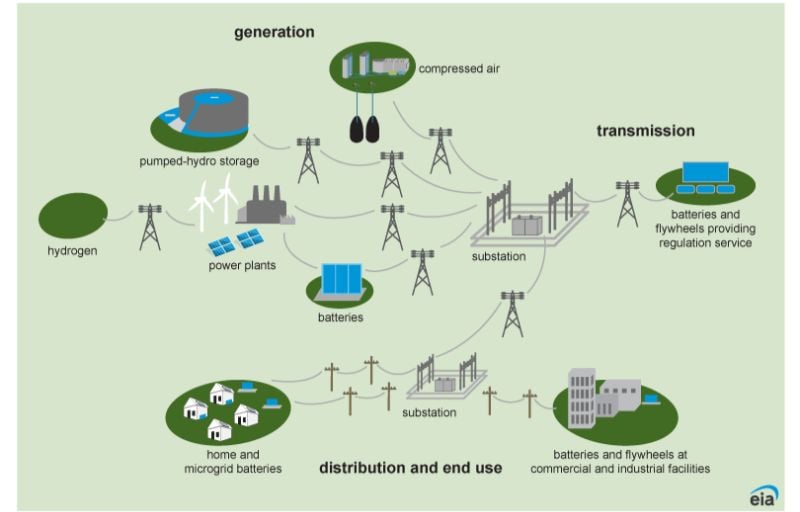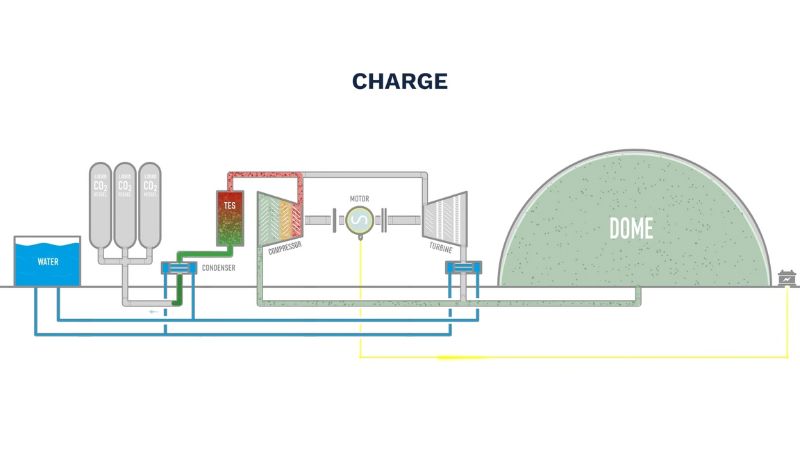Storing Renewable Energy with CO2 Balloon Technology
A Milan-based startup has introduced a novel approach to storing renewable energy utilizing CO2 stored within a balloon to address renewable energy supply-demand gaps.
Some challenges demand attention in the transition to a more sustainable energy future, including the contribution of carbon dioxide (CO2) emissions to global warming and renewable energy intermittency. Addressing these challenges requires innovative strategies for reducing CO2 emissions while ensuring continuous energy production.
Energy Dome, a startup in Milan, Italy, has been pursuing an innovative approach to storing renewable energy by utilizing CO2 stored within a balloon. This article reviews the hurdles to achieving a sustainable future and explores how the startup could overcome them.
Energy Dome’s CO2 energy storage. Image used courtesy of Energy Dome
Green Energy Dreams, Real Challenges
Managing the fluctuating demand and supply in renewable energy integration presents a unique set of challenges and opportunities for the modern energy grid. Renewable energy sources are inherently intermittent, dependent on weather conditions and time of day, so their integration into the grid necessitates innovative solutions to ensure reliability and stability.
One critical strategy for addressing this variability involves developing and deploying advanced energy storage technologies. Energy storage systems store surplus energy generated by renewable sources during peak production times. The systems then release it when production is low or demand is high. This stabilizes the grid and improves the efficiency of renewable energy utilization, ensuring a constant energy supply regardless of external conditions.
Types of energy storage systems. Image used courtesy of Energy Information Administration
For many years, power plants have grappled with managing fluctuating demand through various methods like pumped storage, where excess energy is stored by pumping water from lower to higher reservoirs. This practice helps balance energy production and demand, especially with renewables. However, traditional storage methods like pumped storage hydropower and lithium-ion batteries have drawbacks. Pumped storage requires significant landscape alterations and is expensive. Similarly, lithium-ion batteries, while effective for short-term storage, face limitations in scalability and cost-effectiveness for longer durations.
As renewable energy adoption grows, finding sustainable and efficient storage solutions becomes increasingly critical. For environmental protection, reducing CO2 emissions while maximizing the utilization of renewable energy sources is vital for fulfilling power needs sustainably.
A Unique Approach to Energy Storage
Energy Dome, a Milan-based startup, is taking a unique approach to energy storage with a novel technology utilizing climate-hostile CO2 gas.
At the location of a previous petrochemical facility, Energy Dome employed a massive balloon, referred to as a "dome." The idea was to utilize CO2 as a form of energy storage resembling a battery. Throughout daylight hours, local grid power, including nearby solar farms, compresses CO2 into a liquid state. Conversely, during nighttime hours, the liquid CO2 reverts to gas by an expansion process, activating turbines to generate electricity for redistribution back into the grid. This system can store energy for hours or even days, crucial for integrating renewable energy sources into the power grid.
Illustration of the storage balloon technology. Image used courtesy of Energy Dome
Specialized equipment facilitates the process of compressing and expanding CO2, ensuring efficient energy conversion and storage. This approach offers significant benefits, including CO2-free energy storage and improved grid stability, contributing to the decarbonization of the power grid. Furthermore, the scalability and economic viability of this technology make it a promising solution for addressing the challenges posed by renewable energy variability.
Decarbonizing the Power Grid
Efficient energy storage is crucial for reducing reliance on fossil fuels and transitioning to a decarbonized power grid. Energy Dome’s approach could simultaneously solve the problem of integrating renewable energy and reducing atmospheric CO2. Recognizing its significance, the U.S. Department of Energy has pledged substantial funding to advance energy storage technologies.









